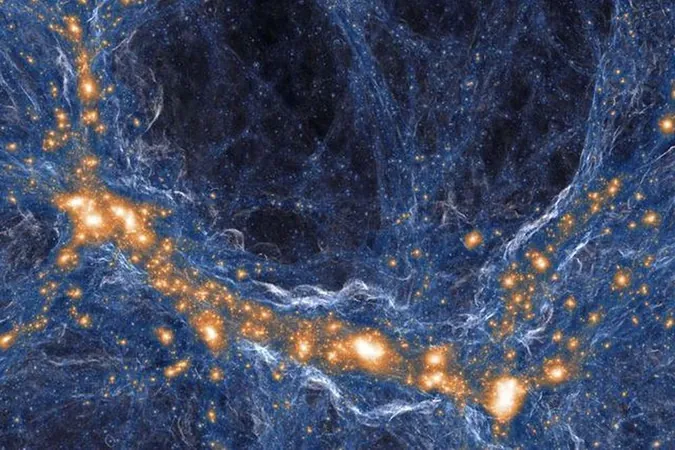
Unlocking the Secrets of the Universe: Could Axions Surround Neutron Stars?
2024-10-23
Author: Arjun
Unlocking the Secrets of the Universe: Could Axions Surround Neutron Stars?
Recent discoveries in the realm of astrophysics have sparked enthusiasm among scientists as they delve deeper into the enigmatic substance known as Dark Matter (DM). Postulated since the 1960s, DM is believed to make up a staggering 85% of all matter in the cosmos. However, its exact nature remains one of the biggest mysteries in modern science. A groundbreaking theory suggests that axions, hypothetical elementary particles with extremely low mass, could be the missing link explaining this elusive cosmic component.
Originally introduced in the 1970s to tackle inconsistencies within the Standard Model of particle physics, axions have emerged as a prime candidate in the search for DM. Their peculiar characteristics could mean they interact with ordinary matter primarily through gravity, making them incredibly difficult to detect. Researchers at CERN are currently developing advanced instruments such as the CERN Axion Solar Telescope (CAST), aiming to unlock the secrets of these particles.
Leading the charge in recent research, Dion Noordhuis, a Ph.D. candidate at the University of Amsterdam, along with a global team of physicists, has directed their focus toward neutron stars. These incredibly dense celestial bodies possess powerful magnetic fields, billions of times stronger than Earth's, which may be conducive to the formation of axion clouds. Incredibly, the research, published in the journal Physical Review X on October 17, 2024, suggests that these clouds could potentially emit detectable signals, offering scientists a golden opportunity to observe axions from Earth.
Neutron stars, the remnants of supernova explosions, are excellent candidates for axion production and containment due to their intense electromagnetic fields. Noordhuis’s team has conducted simulations to examine how axions escape these stars and how they could coalesce into vast clouds over millions of years. This study posits that these axion clouds not only exist but are substantially larger than local DM densities, making detection through current radio telescopes viable.
The implications of these findings extend beyond simply detecting axions. The detection of their signatures—whether as a continuous emission over a neutron star's lifespan or a dramatic burst of light at the end of its life—could provide crucial insights into the fundamental nature of the universe. This research could also redefine our understanding of the dynamics within neutron stars, particularly as it explores binary systems comprising two neutron stars or a neutron star paired with a black hole.
With advanced observational techniques and next-generation telescopes on the horizon, scientists are on the brink of potentially discovering not only axions but also unraveling the age-old riddle of Dark Matter. This work could usher in a new era for multiple scientific disciplines, bridging gaps in particle physics, plasma physics, and radio astronomy, ultimately paving the way to uncover some of the most profound mysteries of our universe.
Could axions finally unlock the secrets of Dark Matter? Stay tuned as science races to reveal the truth lurking within the cosmos!



 Brasil (PT)
Brasil (PT)
 Canada (EN)
Canada (EN)
 Chile (ES)
Chile (ES)
 España (ES)
España (ES)
 France (FR)
France (FR)
 Hong Kong (EN)
Hong Kong (EN)
 Italia (IT)
Italia (IT)
 日本 (JA)
日本 (JA)
 Magyarország (HU)
Magyarország (HU)
 Norge (NO)
Norge (NO)
 Polska (PL)
Polska (PL)
 Schweiz (DE)
Schweiz (DE)
 Singapore (EN)
Singapore (EN)
 Sverige (SV)
Sverige (SV)
 Suomi (FI)
Suomi (FI)
 Türkiye (TR)
Türkiye (TR)